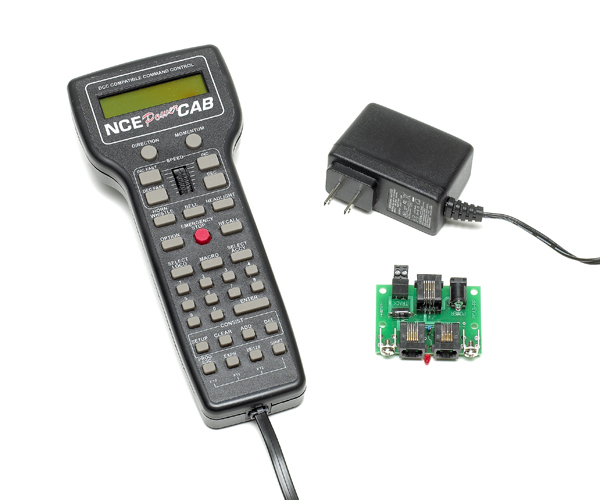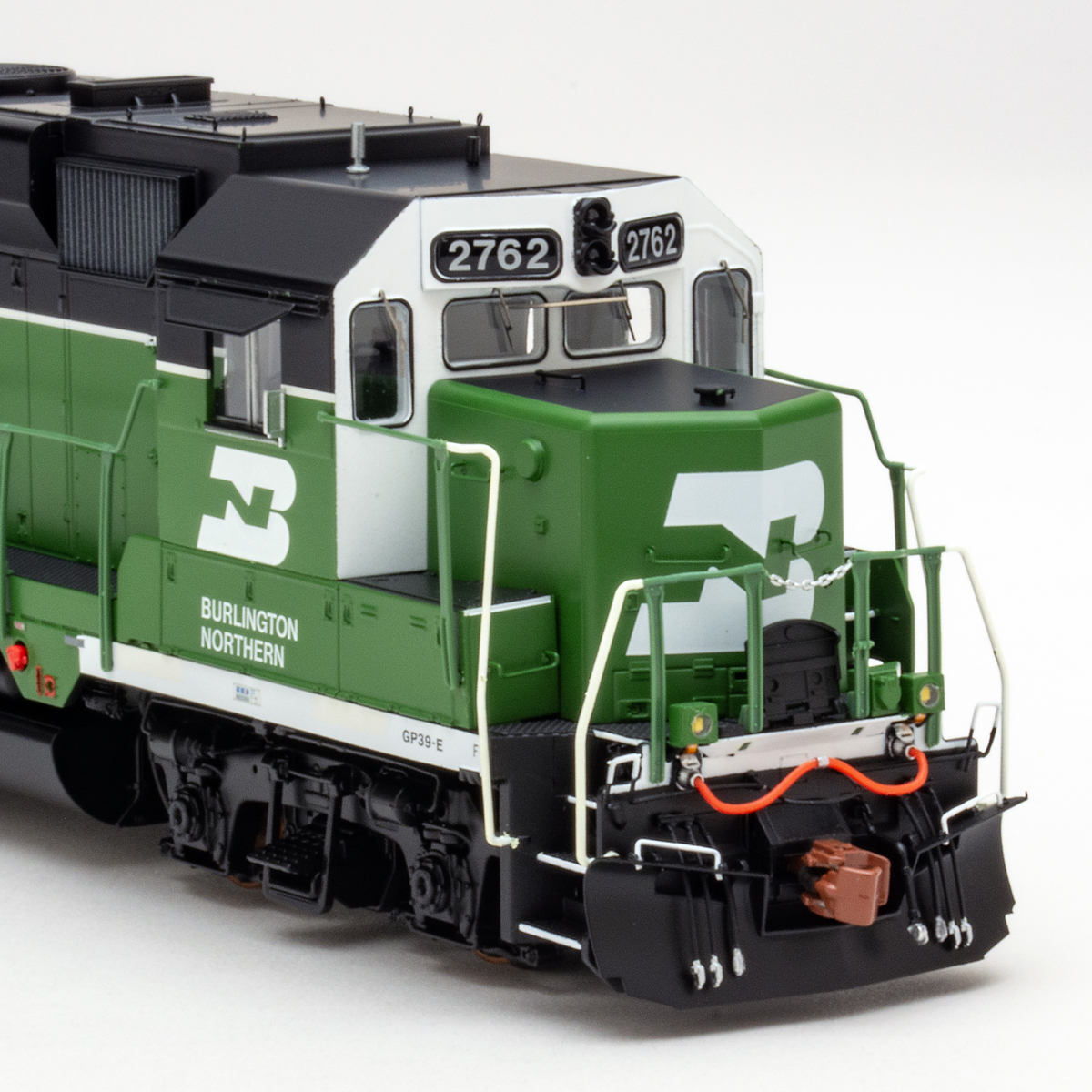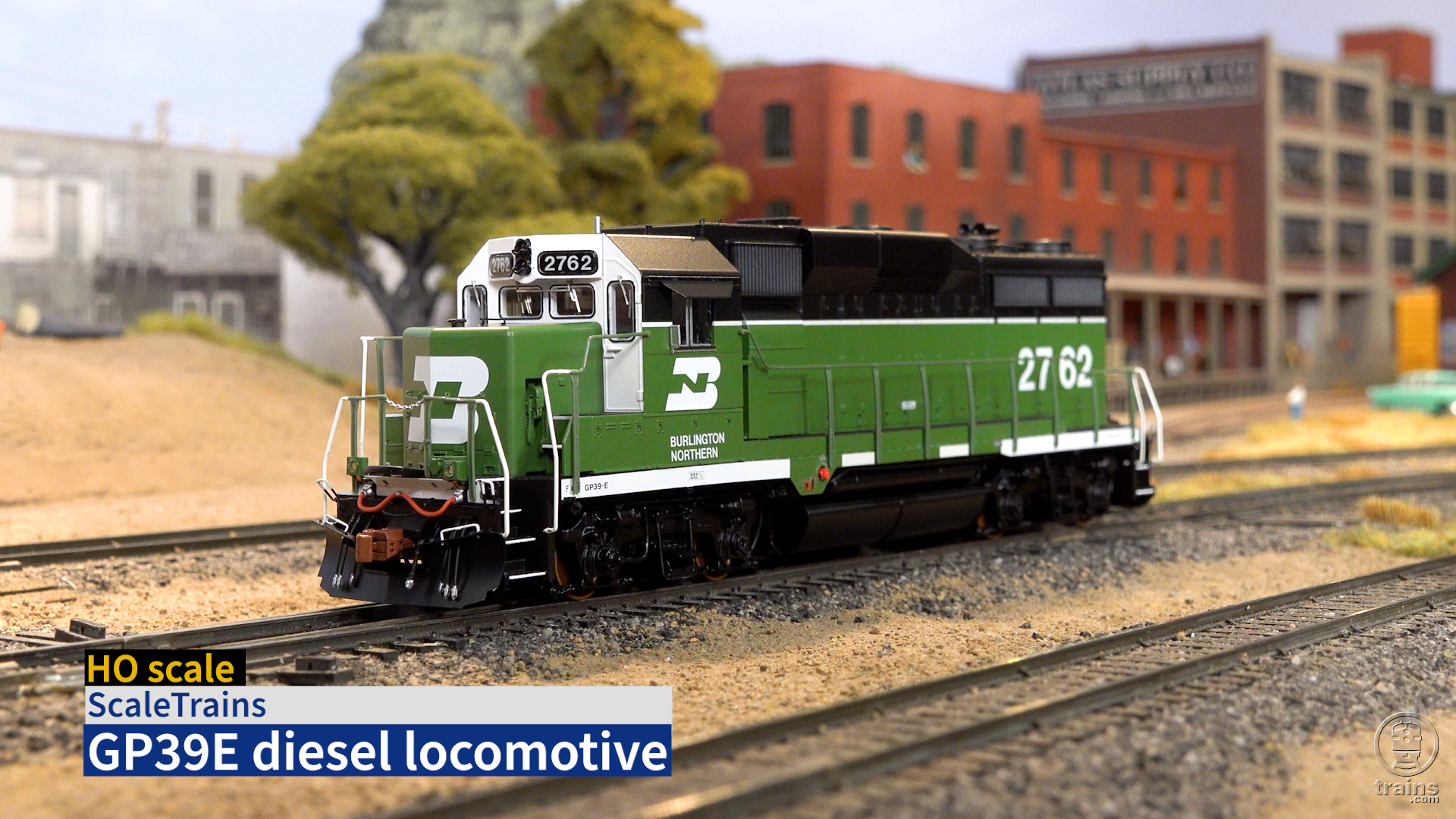Easy set up. Setting up the PowerCab was extremely simple. First, I connected the two wires of the track bus on our test track to the screw terminals on the back of the supplied plug panel. Second, I plugged the flat six-wire PowerCab cable into the telephone-style PowerCab jack on the front of the panel. Third, I plugged in the power supply cord into the barrel jack on the rear of the plug panel.
The plug panel can be mounted on the fascia of a layout. An additional telephone-style jack on the front of the panel is for an optional NCE tethered throttle (not included), such as the ProCab master throttle or Cab04 engineer throttle. A jack on the rear of the panel lets you connect additional plug panels for walkaround control. A red light-emitting-diode on the front of the panel indicates if the system is receiving power.
Because the PowerCab serves as the command station and booster for the system, it must remain plugged into the PowerCab jack.
Running trains. The layout of the PowerCab throttle is the same as the NCE ProCab throttle, including a 5/8″ tall backlit LCD screen. When running trains, the screen displays a clock and the locomotive’s address, direction, and current speed step. A button on the bottom of the cab lets you toggle between 28 and 128 speed steps.
You control locomotive speed with a thumbwheel or the “INC” and “DEC” buttons at the top of the cab. “INC FAST” and “DEC FAST” buttons let you adjust the speed in increments of four speed steps.
I enjoyed the yard mode feature of the cab, which, when activated, lets you use the thumbwheel to control both speed and direction. This feature is useful for slow-speed switching.
Decoder functions are all triggered by the numeric keypad on the bottom half of the cab. One press turns a function on, another turns it off. A separate horn/whistle button activates as long as the key is pressed, so you can have long or short horn or whistle blasts. Bell and headlight buttons activate those features.
The Option button on the cab lets you access functions 10 to 28. Press Option once followed by a numerical key to access functions 10 to 19. Press Option twice followed by a numerical key to access functions 20 to 28.
DCC programming. The PowerCab supports programming on the main (also called ops mode programming) so you can change the configuration variables (CVs) of a specific locomotive’s decoder without affecting any other locomotive on your railroad. You can also use the PowerCab to program locomotives on a programming track that’s isolated from the rest of your layout. This is the only way that you can use the PowerCab to read back the CVs of a locomotive’s decoder.
The plug panel supplied with the set doesn’t include separate programming track outputs. However, the operating manual includes instructions for setting up a programming track.
Programming decoders, including setting CVs and setting up advanced consists, is simple and outlined in the instruction manual. The menus displayed on the cab’s LCD screen effectively walk you through the process.
There are some shortcut programming menus that let you set a locomotive’s address or adjust its momentum. The latter feature has nine levels and automatically adjusts a locomotive’s acceleration and deceleration rates.
You can also adjust the PowerCab throttle’s clock to display real time or to function as a fast clock with ratios from 1:1 to 1:15.
The PowerCab supports accessory decoder addresses of 1 to 2044. You can program the Macro button to trigger several accessory decoders simultaneously, such as lining multiple turnouts for a specific route.
Expanding the system. The NCE PowerCab supports only one additional walkaround cab. For larger layouts NCE sells the SmartBooster (manufacturer’s suggested retail price $99.95). This 3-amp booster supplies more power and lets you use two additional cabs. With the SmartBooster you can use a total of four tethered cabs for walkaround control, including the PowerCab, which no longer needs to remain plugged into a single location.
For those users who upgrade to a larger NCE DCC system, the PowerCab will function as an NCE ProCab tethered throttle.
The NCE PowerCab offers a good option for model railroaders who want to move from DC to DCC.














